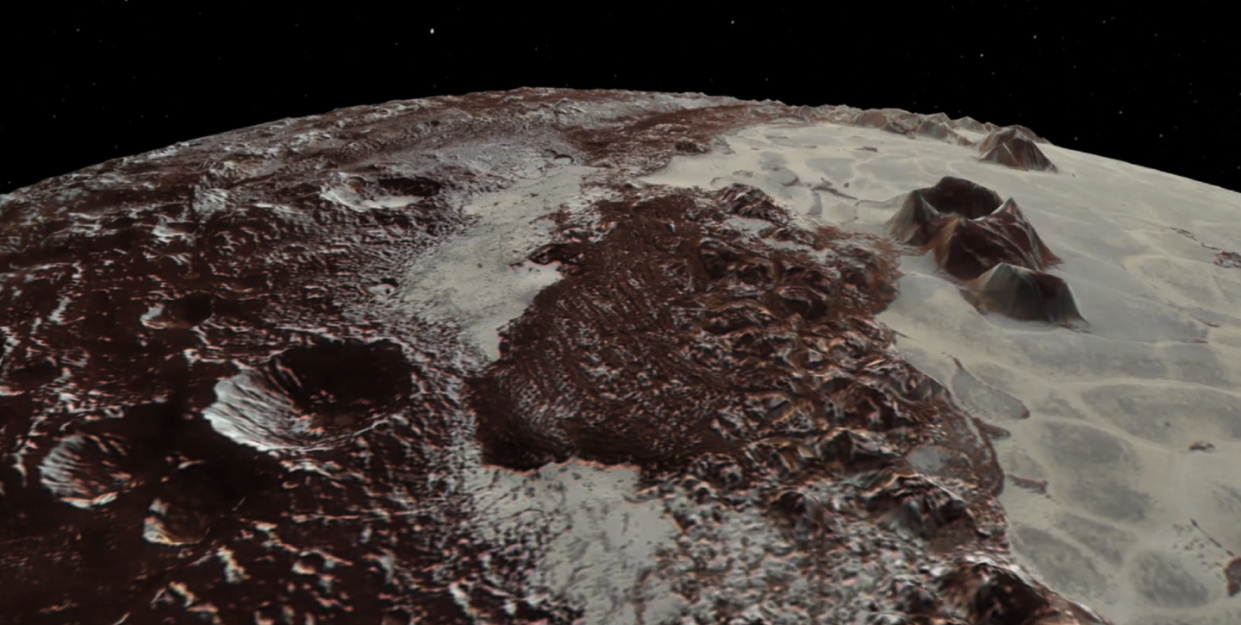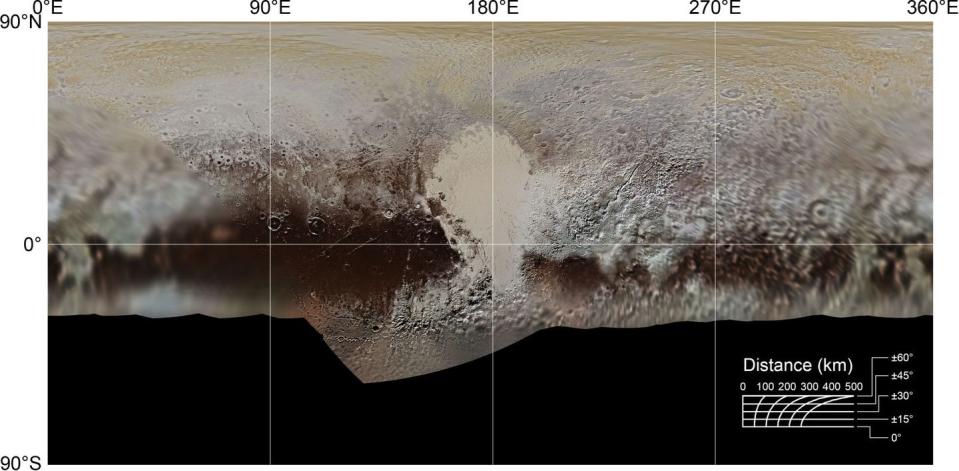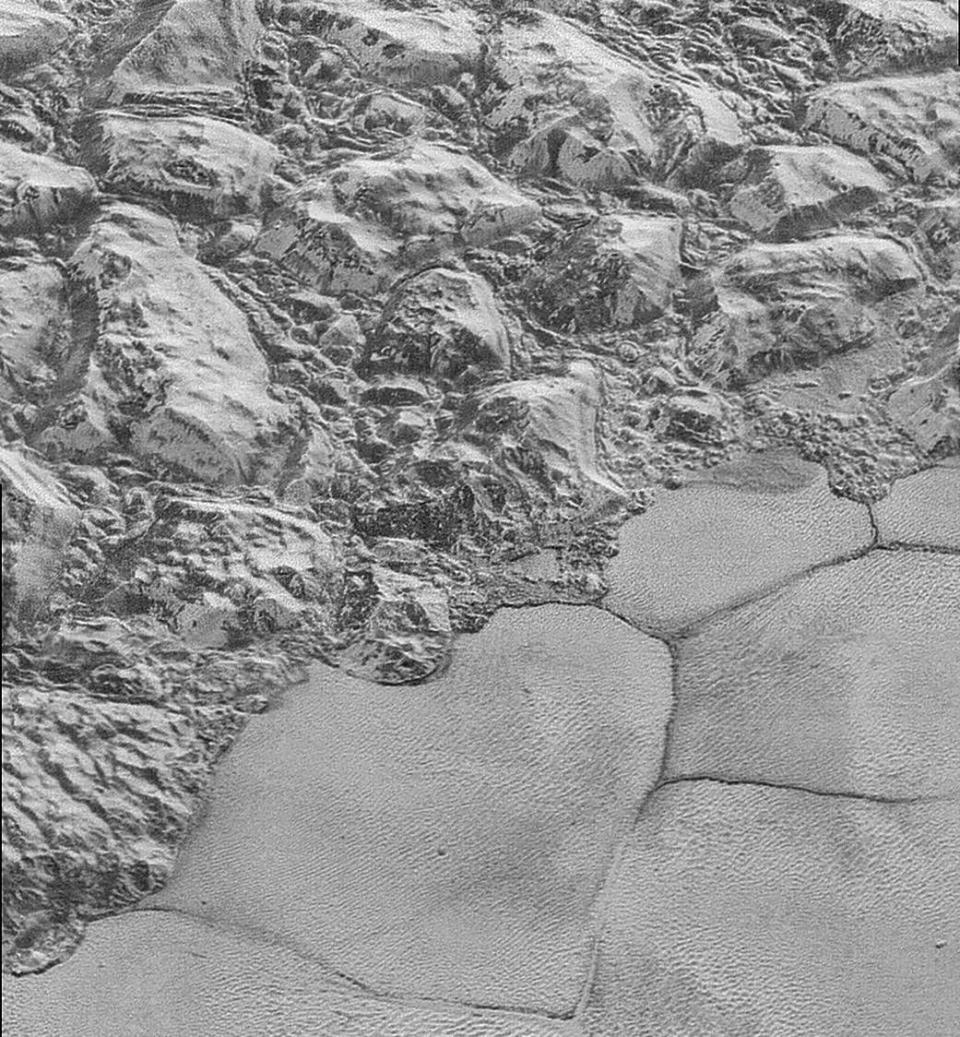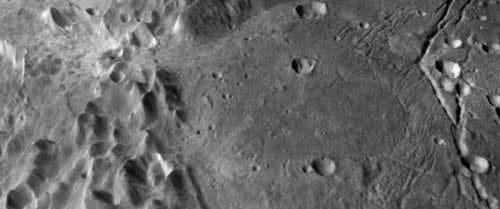These Maps of Pluto and Its Moon Charon Are the Most Detailed Ever Made

Using data from the New Horizons space probe, researchers have created the first ever comprehensive maps of Pluto and its largest moon, Charon.
The new maps help to complete New Horizons official mission: a better understanding of the dwarf planet at the far reaches of the solar system. To create them, scientists at NASA used data from New Horizons instruments like the Long Range Reconnaissance Imager (LORRI), a telescope with an 8.2-inch aperture. LORRI is essentially a digital camera with a large telephoto lens built to withstand the brutal cold of the outer solar system.
At the time of New Horizons' launch, scientists predicted that LORRI would offer "an unprecedented look at the geology on Pluto and its moons." After taking pictures during the probe's 2015 flyby, it's done exactly that.

“This was one of the most complex yet most exciting planetary mapping projects I’ve had the pleasure to be involved with. Every time new images came down, something new would be revealed," said Paul Schenk, a lead New Horizons researcher at the Universities Space Research Association (USRA), in a press release.
While LORRI and its accompanying instruments, such as the Multispectral Visible Imaging Camera (MVIC), sent raw data back to Earth, it fell to the researchers to unpack and analyze the data in a way that makes sense. This two year process, which happened in real-time as New Horizons slowly sent back its data, required a detailed alignment of surface features in overlapping images to assemble a mosaic of the small world.
These cartographic and topographic maps offer a level of detail previously unavailable when looking at Pluto. Examples include the Sputnik Planitia, a 625-mile frozen nitrogen ice sheet that's on average 1.5 miles thick, making it the lowest known area on Pluto's surface.
From the lowest point to the highest, the maps offer a new look at features such as the Tenzing Montes, the tallest mountain range on Pluto. Formed at the southwestern margins of the Sputnik Planitia, these icy peaks have steep slopes of 40 degrees, which would likely make them expert-level Black Diamond ski trails if they were on Earth.

Named after Nepalese sherpa Tenzing Norgay, who alongside Edmund Hillary became one of the first known people to scale Mt. Everest, the range's highest peak is approximately 3.7 miles above Pluto's mean elevation-the dwarf planet's equivalent of "sea level." It is comparable to Denali in Alaska. The mountain range also speaks to the diverse types of ice on Pluto. The nitrogen ice that makes up the Sputnik Planitia, for example, would be too weak to maintain a mountain range even in Pluto's low gravity.
The maps have also provided a better understanding of Charon. The tiny moon features depressions 8.7 miles deep, deeper than the Marianas Trench, and the maps reaffirm that Charon likely has volcanoes of ice known as cyrovolcanoes.

The maps also revealed new mysteries about the distant celestial bodies. The longest continuous feature on Pluto is apparently an eroded ridge-and-trough system stretching 1,864 miles from north-to-south alongside the western side of the Sputnik Planitia. There's is currently no understanding of how this fracture formed.
The maps have been archived in the Planetary Data System and will soon be made available to the public. A research paper describing the maps has been published in the journal Icarus.
New Horizons isn't done yet. The probe recently woke up from a months-long hibernation to get ready for its next mission: a New Year's Day 2019 rendezvous with an asteroid further away than Pluto called Ultima Thule. Following that flyby, we could get a whole new set of maps of the farthest object ever visited by spacecraft.
Source: USRA
You Might Also Like

